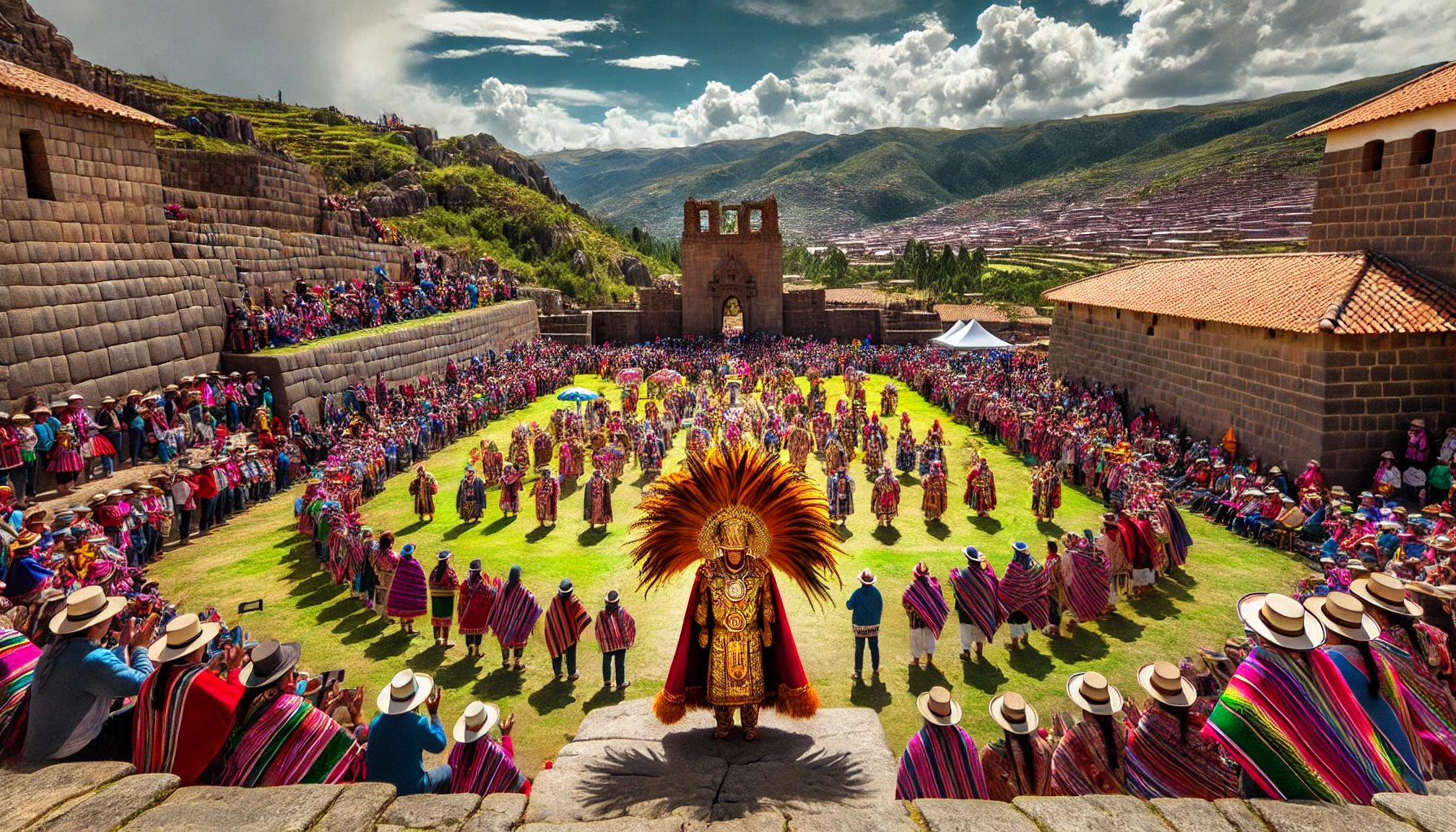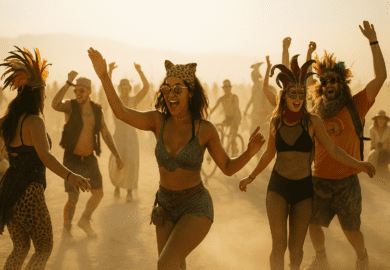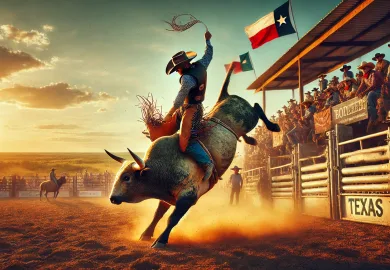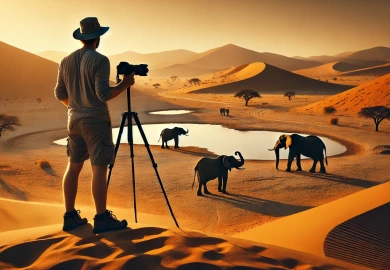
Inti Raymi, the Festival of the Sun, is one of Peru’s most significant and vibrant cultural events. Celebrated annually on June 24th, this ancient Incan festival honors Inti, the Sun God, who was believed to be the source of all life and power. Held in the historic city of Cusco, the former capital of the Inca Empire, Inti Raymi is a powerful symbol of Peru’s rich cultural heritage and a testament to the enduring legacy of the Inca civilization.
The Historical Significance of Inti Raymi
Inti Raymi has deep historical roots that stretch back to the height of the Inca Empire. The festival was originally established by Pachacuti, one of the most revered Inca emperors, in the 15th century. The Incas, who worshipped Inti as their most important deity, celebrated this festival at the winter solstice to mark the beginning of a new year.
The festival was more than just a religious ceremony; it was a state event that reinforced the divine right of the emperor, known as the Sapa Inca, who was considered a direct descendant of the Sun God. During the Inca period, Inti Raymi lasted for nine days and included various rituals, offerings, dances, and grand feasts. The highlight was the sacrifice of llamas to ensure a good harvest and to thank the Sun God for his benevolence.
After the Spanish conquest of the Inca Empire in the 16th century, Inti Raymi was banned as part of the broader suppression of indigenous traditions and religious practices. However, the spirit of the festival lived on in secret for centuries. In the 20th century, thanks to the efforts of Peruvian scholars and cultural advocates, Inti Raymi was revived and transformed into a public celebration that both honors its ancient roots and showcases Peru’s cultural diversity.
The Modern-Day Celebration of Inti Raymi
Today, Inti Raymi is one of the largest and most important cultural festivals in South America. Every year on June 24th, thousands of locals and tourists gather in Cusco to witness the reenactment of the ancient Inca ceremony. The festival begins at the site of the Qorikancha, once the most important temple in the Inca Empire dedicated to Inti.
The celebration starts early in the morning with a vibrant procession from the Qorikancha to the main square of Cusco, known as the Plaza de Armas. Here, the Sapa Inca, accompanied by his royal entourage, priests, and other participants dressed in traditional Inca attire, gives a ceremonial speech in Quechua, the language of the Incas. The procession then continues to the ancient fortress of Sacsayhuamán, located on the outskirts of the city.
At Sacsayhuamán, the main ceremony takes place. The site, with its massive stone walls and panoramic views of Cusco, provides a dramatic setting for the event. The ritual includes music, dances, and offerings to the Sun God, all performed with great reverence and precision. The culmination of the ceremony is the symbolic sacrifice of a llama, a gesture meant to ensure the fertility of the land and the prosperity of the people.
While the modern Inti Raymi is a reenactment rather than an exact replication of the original festival, it remains a powerful expression of Andean identity and spirituality. The festival not only celebrates the Inca heritage but also underscores the continuity of indigenous traditions in contemporary Peruvian society.
The Cultural Impact of Inti Raymi on Peru
Inti Raymi is more than just a festival; it is a cultural phenomenon that plays a crucial role in preserving and promoting Peru’s indigenous heritage. The festival serves as a vivid reminder of the country’s pre-Columbian history and the rich legacy of the Inca civilization. For many Peruvians, especially those of Quechua descent, Inti Raymi is an opportunity to reconnect with their ancestral roots and to celebrate their cultural identity with pride.
The festival also has a significant impact on tourism in Peru. Every year, Inti Raymi attracts thousands of visitors from around the world, contributing to the local economy and providing a platform for the global promotion of Peruvian culture. The influx of tourists during the festival season boosts local businesses, from hotels and restaurants to artisans and tour operators, helping to sustain the livelihoods of many people in Cusco and the surrounding areas.
Furthermore, Inti Raymi has inspired a resurgence of interest in other traditional Andean festivals and practices. As a result, there has been a broader movement to revive and preserve indigenous languages, crafts, and rituals that are at risk of disappearing. This cultural renaissance not only enriches the lives of those who participate in these traditions but also enhances the cultural diversity of Peru as a whole.
How to Experience Inti Raymi as a Visitor
For those planning to visit Peru, attending Inti Raymi offers a unique and unforgettable cultural experience. The festival provides an immersive opportunity to witness the grandeur of Inca traditions and to participate in a celebration that has been passed down through generations.
To fully experience Inti Raymi, it is advisable to arrive in Cusco a few days before the festival to acclimate to the high altitude and to explore the city’s many historical and cultural attractions. Cusco, with its cobblestone streets, colonial architecture, and vibrant markets, is a city rich in history and charm.
During Inti Raymi, there are several key locations where visitors can experience different aspects of the festival. The initial ceremony at the Qorikancha is open to the public, and the procession through the streets of Cusco is a lively and colorful spectacle. However, the main event at Sacsayhuamán is the highlight of the festival. Tickets for the Sacsayhuamán ceremony are available for purchase, and it is recommended to buy them in advance due to the high demand.
In addition to the main events, Cusco offers a variety of cultural activities and exhibitions related to Inti Raymi, including traditional music and dance performances, art displays, and lectures on Inca history and culture. These events provide valuable context and deepen the understanding of the festival’s significance.
For those interested in a more immersive experience, there are also opportunities to visit nearby communities where Inti Raymi is celebrated in a more traditional and intimate setting. These local festivals offer a glimpse into the daily lives and customs of the Andean people and provide a deeper connection to the spiritual essence of Inti Raymi.
The Legacy of Inti Raymi in Modern Peru
Inti Raymi stands as a powerful symbol of cultural resilience and continuity in modern Peru. Despite centuries of colonization, suppression, and change, the festival has endured and evolved, maintaining its relevance in contemporary society. It serves as a reminder of the strength and vitality of Peru’s indigenous cultures and their ability to adapt while preserving their core values and traditions.
In a broader sense, Inti Raymi also highlights the importance of cultural preservation in a rapidly changing world. As globalization continues to influence all aspects of life, the festival offers a counterbalance, emphasizing the value of heritage, identity, and community. By celebrating Inti Raymi, Peruvians not only honor their ancestors but also assert the importance of their cultural heritage in shaping their present and future.
For visitors, Inti Raymi offers more than just a spectacular show; it provides a meaningful connection to the ancient Andean worldview and a deeper appreciation of the cultural diversity that defines Peru. Whether as a participant or a spectator, experiencing Inti Raymi is an opportunity to engage with a living tradition that continues to inspire and unite people across generations and cultures.
In conclusion, Inti Raymi is a festival that encapsulates the essence of Peru’s cultural and spiritual identity. From its historical roots in the Inca Empire to its modern-day celebration in Cusco, the festival is a vibrant expression of the country’s rich heritage and enduring traditions. For those seeking to understand the soul of Peru, there is no better place to start than by witnessing the awe-inspiring celebration of Inti Raymi.








